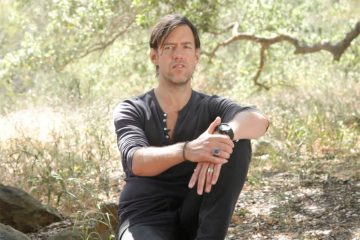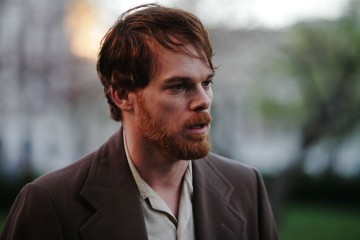Graham Lees / La console de son
 Ingénieur du son depuis 2003, en remplacement de Jim Warren. Sur son site web, il a scanné une belle collection des pass qui lui permettent d’accéder aux backstages (c’est une belle occasion de revisiter l’évolution graphique du groupe).
Ingénieur du son depuis 2003, en remplacement de Jim Warren. Sur son site web, il a scanné une belle collection des pass qui lui permettent d’accéder aux backstages (c’est une belle occasion de revisiter l’évolution graphique du groupe).
Au départ, en 2000 il a juste été engagé comme un roadie occasionnel, mais au final, on lui a demandé de rester dans l’équipe. Il devait vérifier les cables, le son, bref que tout était bien en place pour envoyer un super son.
Pendant les concerts, il vérifiait les backups pour l’ingénieur Jim Warren en change du moniteur son. Quand celui-ci changea de poste, en 2003, on lui proposa de postuler et il fut retenu pour le remplacer. Sa première tournée a été celle pour Hail To The Thief. Il se cala sur ce qui s’était fait avant, et s’inscrit donc dans la continuité. En tant que fan du groupe, il faut dire qu’il connaissait déjà bien les chansons…
Sa première innovation fut d’utiliser une console digitale, le Digidesign D. Show, plus compacte (vu que le groupe allait jouer dans de plus petites salles…) pour en savoir plus, vous pouvez aller lire son blog !
Il travaille occasionnellement aussi avec d’autres groupes, comme les Klaxons…
Voici l’explicatif complet de son rôle sur la tournée en 2003 :
[quote cite=’Mondiale, 2003′ align=’none’]Monitor world is presided over by the unflappable Graham Lees, who mixes with a Midas H3000 console and a 16-channel stretch, using all 56 inputs. He’s also sending selected bass and guitar signals to the video at strategic moments. The wedges are all Firehouse, because they are « the best », according to Lees. Thom Yorke, Ed O’Brien (guitar) and Phil Selway (drums) are all on custom-made Firehouse IEMs, and they also use wedges, whereas Jonny and Colin Greenwood use just wedges – and ear defenders !
They all think carefully about what they want to hear, said Lees, which could potentially make his life very complicated, but it doesn’t because of their audio eloquence and their ability to communicate exactly what they want to hear. Since the summer, they’ve used a scanning system based on ham radio technology for the IEMs, that shows a graph of all the FM radio activity in the area, so helping to avoid busy frequencies, and saving a lot of time. It proved particularly invaluable on the festival circuit.
The only effects Lees utilises are two reverbs, and that’s usually only for outdoor shows. He uses a fair amount of compression on the desk to hold the relatively ’fluid’ set up in place. “[/quote]
Une interview (date ?) où Graham Lees donne un tas de détails sur le son envoyé dans les écouteurs des membres sur scène :
GL: Not really, no. Initially I thought we’d have to start employing delays and such-like but we just kept it very simple and it works. In my experience most of the problems with monitoring are caused by excessive levels, but Radiohead’s stage levels are quite low – there are no ferocious levels out there, which makes my life much easier.
GL: That’s right, and the benefit is that everything is very, very controllable on stage because of the low levels – the possibil ity of feedback is almost nil, so I can use the equipment at its optimum. I’m also using these fantastic wedges from Firehouse Productions in New York, which I personally feel are the best wedges ever developed. I can run them almost flat – the XTA graphic EQs I have across them are almost superfluous now, that’s how good they are.
[/quote]
Photos accompagnant l’article :




1 Comment
… [Trackback]
http://www.coffretderelayage.fr/bonjour-tout-le-monde/?cid=3970